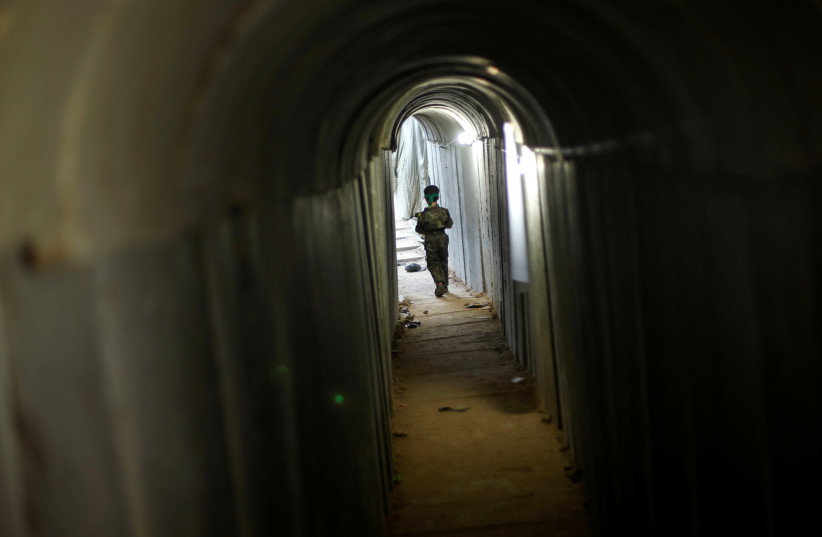In the contemporary era, a nation’s assertion that it resorts to military measures for self-defense or counterterrorism is insufficient. Take, for instance, the Ukraine war, where a significant portion of the discourse focused on concerns about severe climate damage and the potential for global hunger. Notably absent from the discussion were references to the environmental consequences arising from the demolition of the Kakhovka dam or the anticipated catastrophic fallout from damage to the reactor in Zaporizhzhia.
Similarly, with the initiation of Israel’s initiative to inundate Hamas tunnels with seawater, the UN Human Rights Council promptly issued a warning, stating that the flooding “may jeopardize the means of subsistence necessary for the survival of Gaza’s residents and could result in extensive, long-term, and severe environmental damage.”
Arguments of this nature may hold significant sway among the public, particularly European, and even among decision-makers. The moral stance, supposedly upheld by each involved party, might suddenly find reinforcement from environmental considerations supporting the curtailment of Israel’s counterterrorism efforts.
However, theoretical arguments diverge from practical realities, and the need arises to unveil concrete facts.
UN conference: 95% of Gaza's groundwater is not safe for drinking

THE UNITED NATIONS Conference on Trade and Development already determined in 2015 that 95% of Gaza’s groundwater is no longer fit for drinking. The main reasons for this were the very unsound water and sewage infrastructure in the Gaza Strip, overpumping of groundwater, the high concentration of chlorine, and poor treatment of water by the Gazan authorities.
At that time, the water in Gaza was highly saline, rendering it unsuitable for anything beyond hygiene and cleaning. The primary water source in the region is the coastal aquifer, ranging in thickness from a few meters in the east and southeast to 120-150 meters in the north and along the coast. Rainwater is the main contributor to the aquifer, with an average annual precipitation of only 356 mm. in Gaza.
In 1994, the Cairo Agreement transferred control of water supply and sewage systems in the Gaza Strip to Palestinian authorities. For three decades, Palestinians have been solely responsible for managing, developing, and maintaining water and sewage systems.
The exception was Israeli settlements, particularly in Gush Katif, where ownership of drilling, piping, and pooling facilities remained Israeli. In September 1995, the Oslo II Accord was signed in Washington between Israel and the Palestinian Authority. The accord includes a large chapter (Section 40) concerning water and sewage, including the transfer of 5 million cubic meters annually from Israel to Gaza, against Palestinians’ undertaking to avoid actions leading to environmental pollution and proper sewage treatment.
After the 2005 Disengagement, water and sewage systems serving Israeli settlements were also transferred to the PA, including 25 water wells, storage ponds, and an advanced water transportation system. Consequently, all water and sewage systems in the Gaza Strip came under Palestinian control. Subsequently, more than 3,000 unauthorized wells were drilled, primarily under the governance of Hamas, which assumed control of the Strip in June 2007.
These actions severely damaged Gaza’s aquifer water quality and overall water system, with continuous and escalating consequences. The Palestinians have been extracting and continue to extract substantial amounts of water. For instance, in 2012, under Hamas rule, aquifer utilization reached 185 million cubic meters, while the average annual rainfall was around 55-60 million cubic meters.
Consequently, there has been a growing cumulative water deficit, even in years with a significant increase in rainfall. Overpumping has led to a decline in the groundwater level below sea level, causing an increase in the infiltration of salty seawater. Additionally, there is a persistent issue of wastewater infiltrating into the aquifer.
Ecologically, the damage to the aquifer is worsening, with studies indicating a continual rise in water salinity under Hamas rule. Subsequently, 96.2% of the aquifer water supplied in the Gaza Strip for domestic use is unsafe for drinking.
Due to the outdated water infrastructure in Gaza, approximately 40% of water intended for domestic use is lost en route to residents’ homes. In March 2015, Israel doubled the water quota for Gaza through a new pipeline in the Nahal Oz area, allowing the transfer of up to 10 million cubic meters annually.
Payments are offset by the Finance Ministry on a monthly basis, with Gazans purchasing water at NIS 2.57 per cubic meter from old pipes and NIS 3.54 per cubic meter from the Nahal Oz pipe. Israeli consumers pay almost double the price for a cubic meter of water.
Accusing Israel for destruction for using seawater to damage tunnels seems cynical
IN THE current state, where water sources in Gaza were already completely destroyed under Hamas rule before the Swords of Iron war, accusing Israel of environmental destruction by injecting a limited amount of seawater to damage terror tunnels seems cynical. Even if such injected water penetrates the aquifer and is not drained to the sea, it would only marginally increase the aquifer’s salinity, which is already unsuitable for domestic use.
Conversely, the environmental focus should be on the severe damage caused by the Houthi blockade of Red Sea sailing. This prolongs ship routes forced to bypass Africa, resulting in approximately 10 additional sailing days for thousands of vessels. The cumulative greenhouse gas emissions create a substantial and unnecessary “carbon footprint.” This severe environmental damage, several orders of magnitude greater than the alleged damage in Gaza, has not yet been condemned by UN institutions.
The writer is a partner and head of the environmental division in Meitar Law Offices, and chairman of the Environmental Quality Committee at the Israel Bar Association.
